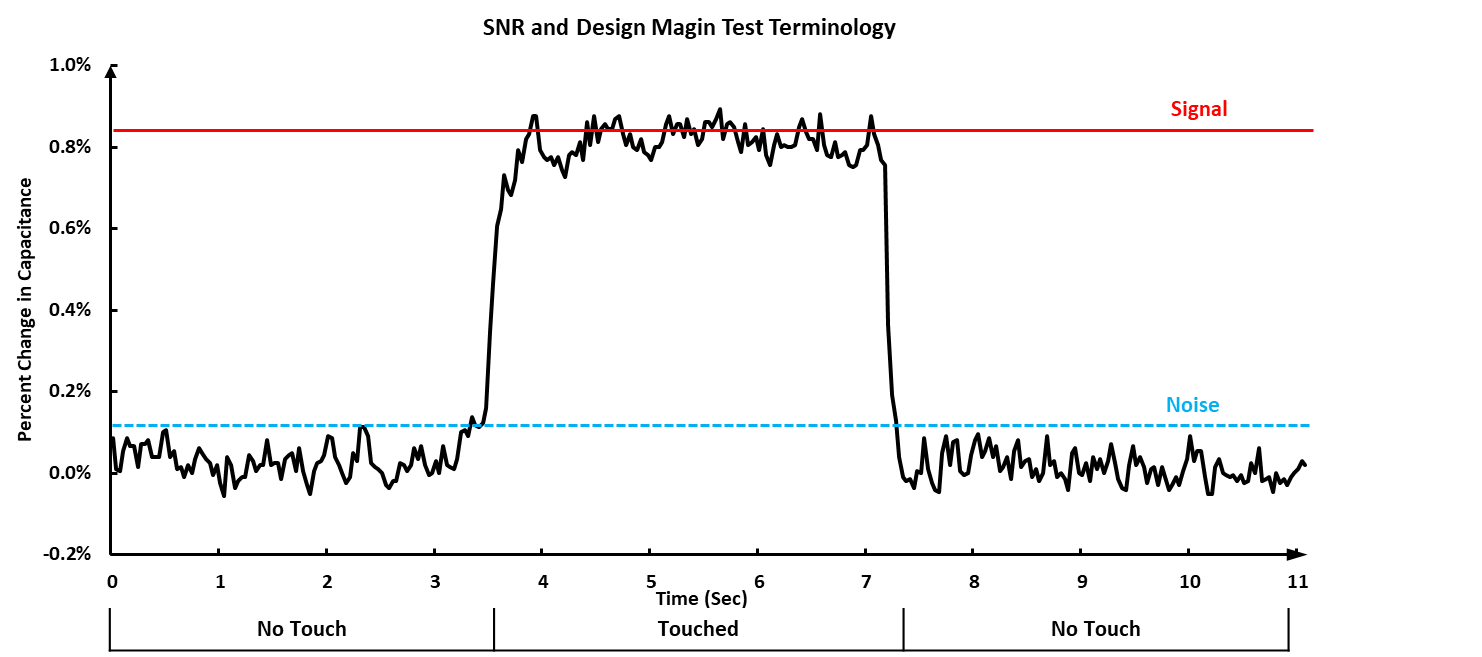SLAA843A August 2018 – March 2019 MSP430FR2512 , MSP430FR2512 , MSP430FR2522 , MSP430FR2522 , MSP430FR2532 , MSP430FR2532 , MSP430FR2533 , MSP430FR2533 , MSP430FR2632 , MSP430FR2632 , MSP430FR2633 , MSP430FR2633
3.2 Noise (N)
Now that signal 'S' is defined, noise 'N' must be defined. It is most efficient to define noise in the same terms as signal, so that the two values can be easily compared (using SNR analysis, for example). This means that noise in a system is defined as the largest observed change in capacitance that is not due to a true touch or proximity event. In this way, noise level 'N' is defined as a measured percent change in capacitance that is unrelated to and thus interferes with the accurate detection of a true touch or proximity event.
There can be several sources of noise to a capacitive touch interface, such as:
- On-chip (IC generated) noise floor
- External conducted or radiated RF noise
- Electrical fast transient or "burst" noise
- 50/60-Hz AC mains noise
The challenge with noise is combining all of the possible noise sources into a single noise value for use in SNR and design margin analysis.
Figure 6 shows the self mode button measurement result in terms of percent change in capacitance for both touched and untouched conditions. The noise is defined as the percent change in capacitance due to the sum of the system noise (see the blue "Noise" line in the figure).
 Figure 6. Noise Terminology
Figure 6. Noise Terminology NOTE
When measuring a physical electrode during development with a CapTIvate MCU, the CapTIvate Design Center SNR tool view can be used to measure the noise level 'N' as a percent change in capacitance.